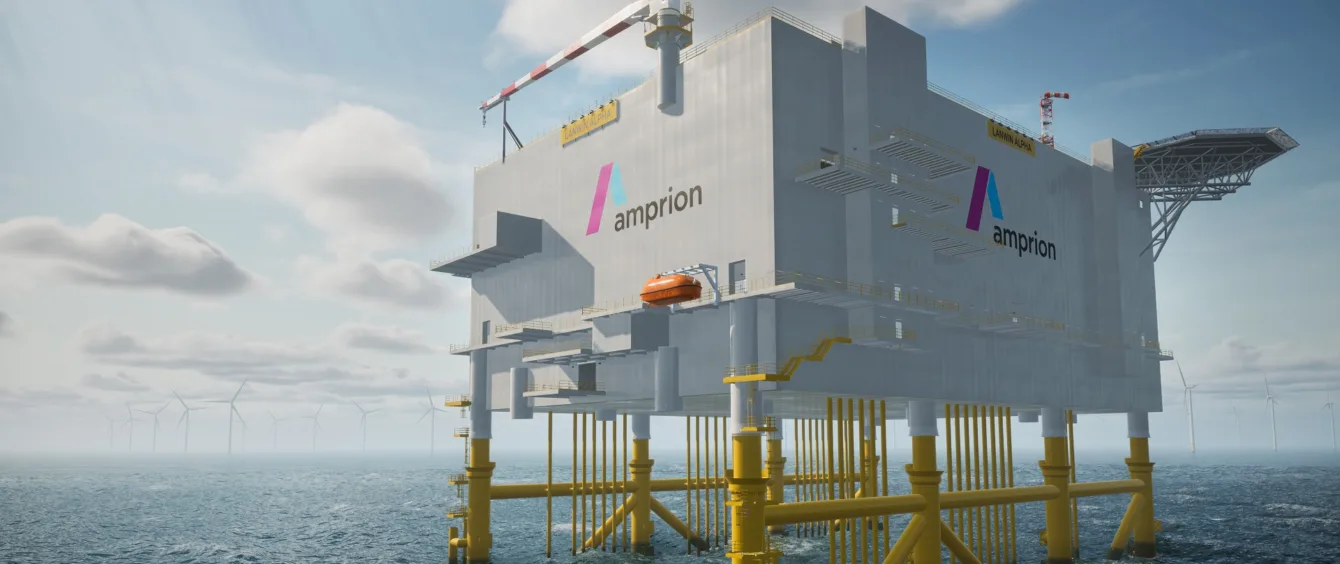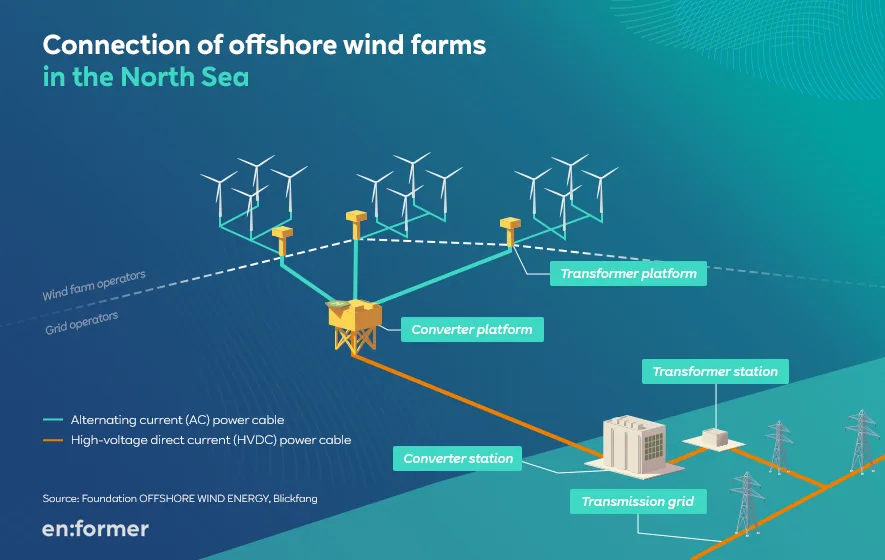Political and industrial consensus is that the future belongs to international offshore wind farm networks featuring hybrid links. Plans to form such grids in the North Sea are taking shape and are being factored into German and European planning processes. In Part 2 of a mini-series, the en:former explores the technical challenges of putting the concept into practice and explains how a European consortium intends to take these hurdles.
Turning the North Sea into Europe’s green power plant is the declared goal of the North Sea nations Germany, Denmark, the Netherlands, Belgium, Norway, Ireland, Great Britain, France and Luxemburg. They have joined forces to expand offshore wind energy into a hybrid network, as confirmed by the countries’ energy ministers who signed a joint statement at the North Sea Summit in Ostend on 24 April 2023. The Ostend Declaration stipulates the implementation of cross-border energy projects, above all in offshore wind.
So offshore networking plans are making progress. However, besides the political and regulatory debate, technical implementation poses another immense challenge. Players involved in offshore wind expansion must develop technological solutions today, which will be required for the energy system of tomorrow – in the middle of the 2030s.
“To a certain degree, we have to anticipate the future and required state of the art for the timely and efficient expansion of the grid,” says Philipp Ruffing, an Amprion expert for high-voltage, direct-current (HVDC) transmission in offshore wind projects. In addition, he coordinates Amprion’s involvement in the EU-backed InterOPERA project that seeks to spur the development of this very key technology for the implementation of networked HVDC systems.
North Sea wind farms are connected to the transmission system in clusters. Wind farm turbines generate alternating current (AC) which is collected at wind farm transformer platforms. Here, the electricity is stepped up to high voltage and transmitted to the transmission system operator’s offshore converter platform which pools power from several wind farm clusters. The electricity is transformed from alternating current to direct current (DC) by the converter platform. Future projects can do without the wind farm transformer platform as the electricity will be transmitted from the wind turbines directly to the converter platform. The direct current then flows to the onshore grid connection via a high-voltage line, a process that is considered particularly effective due to the fairly small transmission losses when covering great distances. This is referred to as high-voltage, direct-current transmission (HVDCT) technology. On the mainland, a further converter station turns the direct current back into alternating current so that it can be fed into the transmission system.
Consortium for technological solutions
Harnessing offshore wind energy from multiple wind farms and transporting it across country borders on a large scale requires multi-terminal HVDC systems, the term used for offshore wind farm clusters featuring several connections (terminals) on the direct-current side, so that they can be linked to each other and to onshore grids. As things currently stand, these types of systems cannot be built at the international level, but InterOPERA is working on clearing the technological hurdles. The objective is to interlink several HVDC systems so they can work together seamlessly.
Philipp Ruffing is aware of the difficulties: “Current offshore converter stations are perfectly matched to their onshore counterparts, as they come from the same manufacturer. However, one cannot bank on a single producer when it comes to building a large and internationally networked HVDC system, as carrying out the project mandates the cooperation of all manufacturers for capacity reasons.” He goes on to explain that it is imperative that all converter station models be compatible with each other, or in other words, ‘interoperable.’ And this is precisely InterOPERA’s mission: The consortium intends to provide a platform on which its more than 20 partners from nine European nations can unite to solve this problem.
Efficient and hybrid: the future offshore grid
Amprion is one of eight transmission system operators (TSOs) participating in InterOPERA. “The TSOs and wind farm developers will establish the rules for designing the interfaces between the converter stations. This will give the manufacturers absolute clarity on the requirements the system must meet. In turn, this will enable us to connect components of various manufacturers when we build the hybrid offshore network,” says Philipp Ruffing.
“The long-term goal is to integrate more and more offshore energy into the system and help each other as best as possible throughout Europe – be it in terms of trading, security of supply or energy autonomy,” summarises Jan Teuwsen. He states that achieving this goal hinges on hybrid offshore networking – a success factor only the degree of which is yet to be determined. After all, the task at hand is not limited to developing functioning technologies, but to find and implement the most efficient solution as well.
Photo credit: © Amprion GmbH

